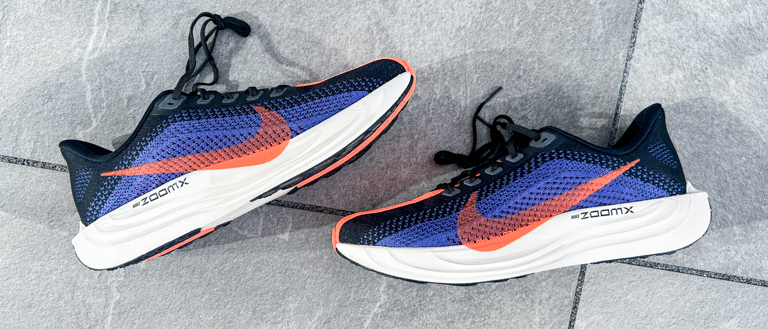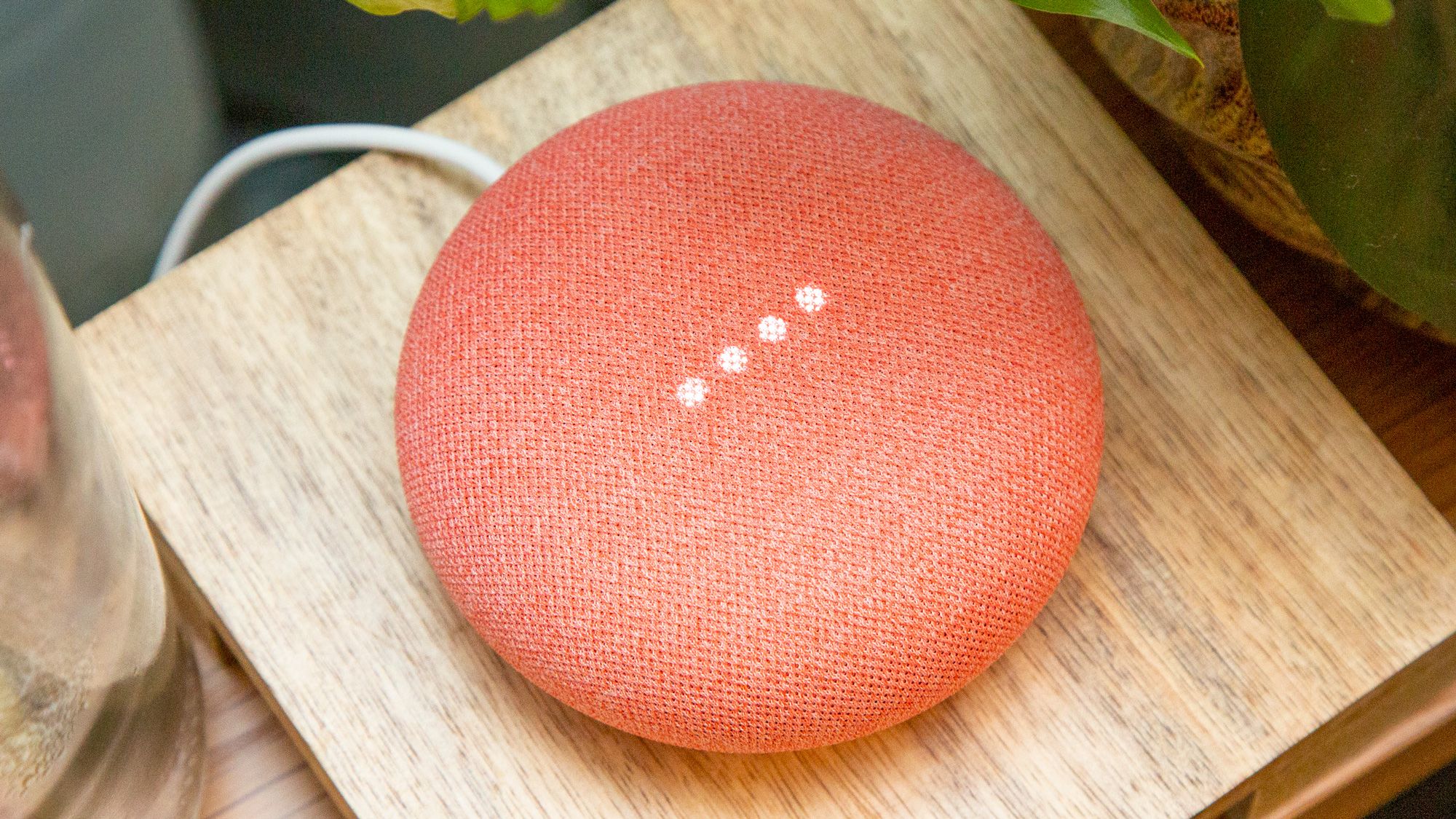Tom's Guide Verdict
The Nike Pegasus Plus is the most versatile training shoe in Nike’s range, and the long overdue successor to the Pegasus Turbo. I enjoyed running in the Pegasus Plus for a range of training sessions and it’s a valuable addition to Nike’s line-up as a lighter, faster shoe than the Pegasus 41, but there are versatile super-trainers I prefer from other brands.
Pros
- +
Comfortable and versatile
- +
ZoomX midsole foam
- +
Lighter than standard Pegasus
Cons
- -
No plate
- -
High drop won’t suit all runners
Why you can trust Tom's Guide
The Nike Pegasus Plus is the long-awaited successor to the Nike Pegasus Turbo, which was mysteriously discontinued after just a couple of generations, the last of which came out in 2019. I loved the Pegasus Turbo as a versatile and lightweight daily trainer, and that’s exactly what the Pegasus Plus is too.
However, the competition the Pegasus Plus faces is very different to the Pegasus Turbo, which broke new ground as a training shoe that used the ZoomX foam from Nike’s racers, like the Vaporfly. Now many of the best running shoes for training use materials from carbon plate racing shoes, and while the Nike Pegasus Plus is a great daily trainer, there are others I find more impressive.
It’s certainly one of the best Nike running shoes though, and I’d say it’s worth the upgrade over the Nike Pegasus 41. In my full Nike Pegasus Plus review I’ll go through its pros and cons, and how it compares to other outstanding options like the Asics Superblast 2 and Hoka Mach X2.
Nike Pegasus Plus review: price and availability
The Nike Pegasus Plus launched in August 2024 and it’s available from Nike direct and third-party retailers like Sportsshoes.com. It costs $180 in the U.S. and £165 in the UK — the same price in the U.S. as the Pegasus Turbo 2, which is surprising given how the price of running shoes has risen in general in the last few years. It’s similar in price to plated super-trainers like the Hoka Mach X2 and Saucony Endorphin Speed 4, and $40 / £35 more expensive than the Nike Pegasus 41.
Nike Pegasus Plus review: design and fit
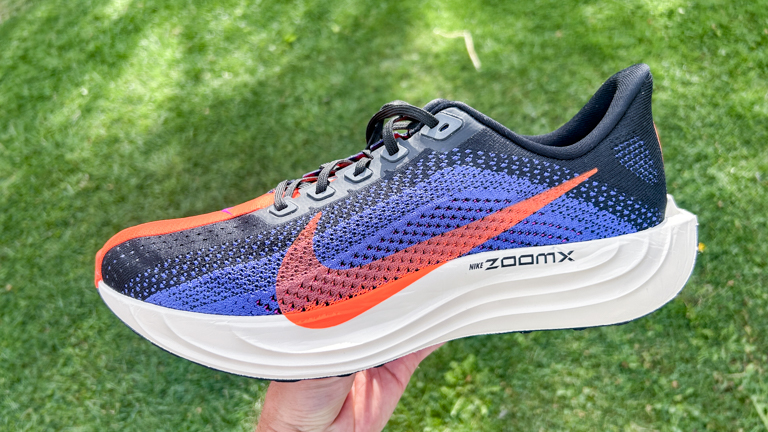
The Nike Pegasus Plus is currently available in five colors for the men’s shoe and four for the women’s, each of which have the stripe running down the front of the upper as a callback to the design of the original Pegasus Turbo.
There is no wide version of the shoe but I found that it fit me well in my normal running shoe size, the same size I’ve used across Nike’s range for years, and I don’t think it’s a particularly narrow shoe.
The Pegasus Plus has a 10mm drop from heel to toe, and while Nike doesn’t list the official stack height I’d say it is around 35mm at the heel in my shoe. It weighs 9oz in my US size 10, which is over an ounce lighter than the Nike Pegasus 41 in the same size.
Get instant access to breaking news, the hottest reviews, great deals and helpful tips.
Upper
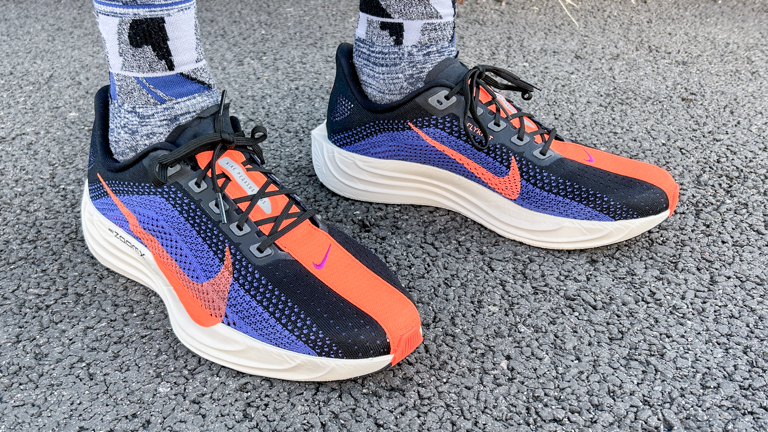
The Pegasus Plus has a Flyknit upper with perforations designed to increase its breathability, although this is limited a bit by the thick stripe running down the front of the shoe. There is an internal heel counter at the back of the shoe to add more structure to the upper there, and some padding around the collar, but overall it’s quite a simple and lightweight upper.
I found the upper on the shoe to be comfortable for runs of any length and it held my foot in place reliably when doing faster runs. I’d say it could be a little warm for those consistently running in very hot conditions, but this wasn’t a problem for me running in temperatures of around 70°F .
Midsole
The midsole on the Nike Pegasus Plus is entirely made from ZoomX, the PEBA foam that Nike has used on its racing shoes like the Nike Vaporfly 3 for many years. The fact the midsole is all ZoomX is different to the original Pegasus Turbo, which had a dual-density midsole with the top layer being ZoomX and the bottom React.
I found that the ZoomX foam used in the Pegasus Plus felt a little firmer than the foam in the racing shoes, which helps the shoe to be more stable for daily training. It’s still a responsive material and comfortable for easy runs, but not quite as springy as you might expect given the feel of ZoomX in a shoe like the Nike Alphafly 3.
Outsole
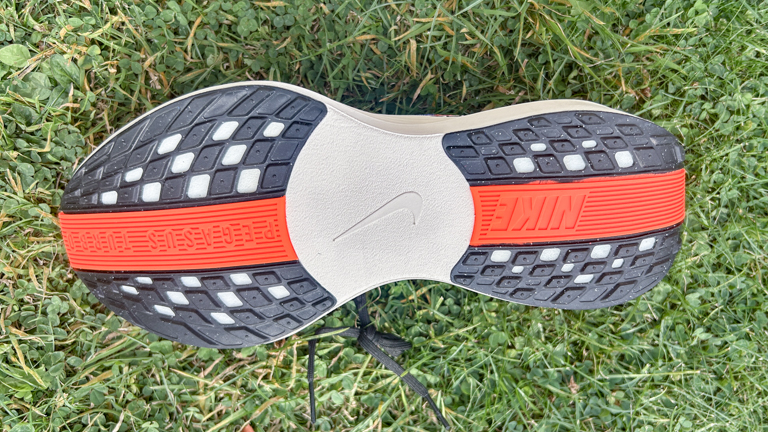
The Pegasus Plus has a high-abrasion rubber outsole made from recycled materials. The rubber covers the heel and forefoot of the shoe, with some exposed foam in the middle that can get pierced by any sharp objects you inadvertently land on, though this won’t affect the performance of the shoe.
I found the grip of the Pegasus Plus to be good, but not outstanding, and you have to be wary of landing on wet drain covers during your runs. The durability of the rubber looks good after 40 miles in the shoe though, even though I have used it for runs on light trails as well as the road.
Nike Pegasus Plus review: running performance
The Nike Pegasus Plus picks up where the Pegasus Turbo left off several years ago, in being an impressively versatile daily trainer. The stack of ZoomX in the midsole delivers a comfortable ride for your easy runs, but is responsive enough for faster efforts as well.
My first run in the shoe was a 60-minute progression run where I moved from an easy pace down to around my marathon pace of 5min 40sec/mile, and the Pegasus Plus felt great throughout. I’ve also done a 15-mile run in the shoe, plus some more relaxed recovery runs, and it has a comfortable and stable feel for those as well.
It has a different ride to many shoes these days, with others in its category tending to have a lower drop and more of a rockered ride, plus more foam under the forefoot. The Pegasus Plus snaps through and can feel a bit thin under the forefoot as a result, and it’s a more direct and grounded ride than a shoe like the Hoka Mach 6 or super-trainers like the Asics Superblast 2, which have more foam in the midsole.
Personally I prefer the more rockered feel of those shoes, but some runners will like the more traditional ride of the Pegasus Plus, which is true to its name in feeling like a souped-up version of the standard Pegasus 41.
However, the lack of a plate in the shoe means it isn’t quite as speedy as super-trainers around its price like the Hoka Mach X2 or Saucony Endorphin Speed 4. Some will also prefer a more comfortable shoe for their easy runs, such as the Nike Invincible 3, which also uses ZoomX and is softer than the Pegasus Plus, though not as light and versatile.
Should you buy the Nike Pegasus Plus?
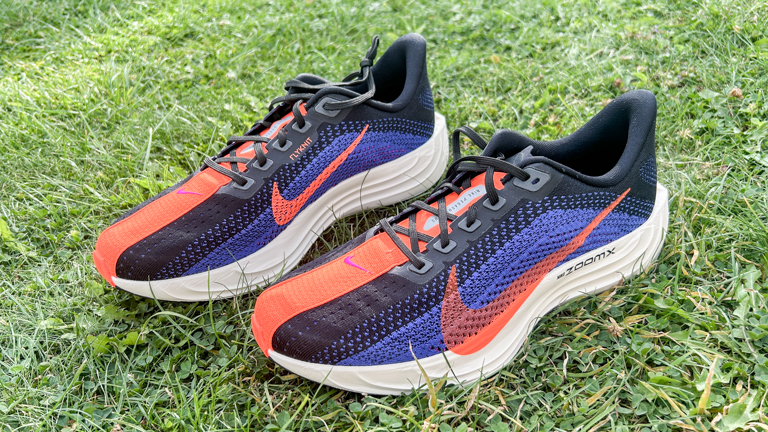
The Pegasus Plus is the best daily trainer in Nike’s range and I think it’s worth the upgrade on the Pegasus 41 as a more versatile shoe to handle a range of runs. If you want a more comfortable Nike shoe for easy efforts then the Invincible is a good option.
Outside of Nike’s range you can find more impressive trainers though, especially those with plates like the Hoka Mach X2 and Saucony Endorphin Speed 4 which offer a faster ride and are still comfortable at easy paces too. The Mizuno Neo Vista is another plated option that offers a softer, bouncier ride than the Pegasus Plus for easy runs.
If you’d prefer not to use a plated shoe, there are still options I rate more highly than the Nike Pegasus Plus, like the Asics Superblast 2 and New Balance Balos, which have bouncier, more enjoyable rides. Those are both more expensive than the Pegasus Plus, but there are also cheaper shoes that match its performance as lightweight daily trainers, like the Hoka Mach 6 and New Balance Rebel v4.
The Pegasus Plus does stand out from the crowd in having a higher drop and more grounded feel than most of these shoes though, and if you're not a fan of rockered shoes with very high stacks for training, it is one of the top options out there.

Nick Harris-Fry is an experienced health and fitness journalist, writing professionally since 2012. He spent nine years working on the Coach magazine and website before moving to the fitness team at Tom’s Guide in 2024. Nick is a keen runner and also the founder of YouTube channel The Run Testers, which specialises in reviewing running shoes, watches, headphones and other gear.
Nick ran his first marathon in 2016 and became obsessed with the sport. He now has PBs of 2hr 25min for the marathon and 15min 30sec for 5K. Nick is also a qualified Run Leader in the UK.
Nick is an established expert in the fitness area and along with writing for many publications, including Live Science, Expert Reviews, Wareable, Coach and Get Sweat Go, he has been quoted on The Guardian and The Independent.
